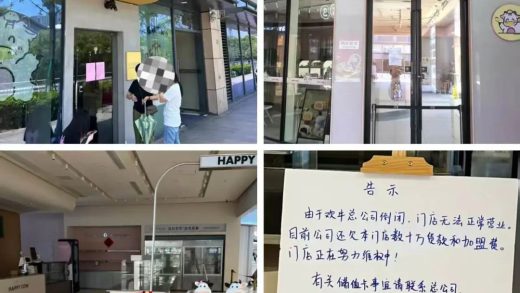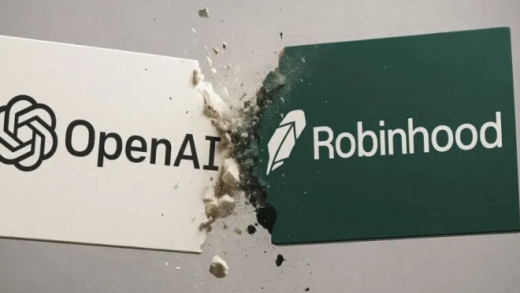1. Industry Risk Analysis
(1) Policy Risk
Currently, the children’s paint industry is facing compliance risks during the policy adjustment period. The state may upgrade environmental protection and safety standards (such as VOC limits and heavy metal detection). If entrepreneurs fail to plan for green formulas in advance or complete new testing and certification, their products will face the risk of being taken off the shelves. Differences in local regulatory enforcement may lead to fines when selling across regions due to non – compliance in surprise inspections in some provinces. Coupled with the trend of shorter policy transition periods, the time window for small and medium – sized enterprises to transform their production lines is compressed, and there is a hidden danger of being forced to exit the market in the short term.
(2) Economic Risk
The children’s paint industry is significantly affected by economic cycle fluctuations: During the economic downturn, the demand for home decoration shrinks. Consumers tend to cut non – essential spending or switch to low – cost alternatives, and the growth rate of the high – end environmental protection paint market slows down. The prices of upstream chemical raw materials fluctuate frequently with commodities, and coupled with the rising logistics costs, entrepreneurs are facing the dilemma of “high costs and low profit margins”. Intensified competition within the industry has led mature brands to squeeze the living space of small and medium – sized entrepreneurs through channel sinking, and the customer acquisition cost for new entrants has soared. The slump in the real estate market has spread to the decoration market, leading to a decrease in B – end engineering orders and the risk of channel inventory backlog. At the same time, financial institutions tighten credit during the economic contraction period, making it more difficult for start – up enterprises to raise funds and increasing the cash – flow pressure sharply.
(3) Social Risk
The children’s paint industry is facing the risk of a generational gap in consumption habits. Parents of the post – 90s and Generation Z are more willing to pay a premium for environmental protection and health, but they generally question the traditional industry trust system (such as certification marks and test reports). They demand real – time visual data tracking, new solutions such as bio – based materials, while the existing supply chain is difficult to support the cost of technology verification. At the same time, the new generation of consumers highly rely on social media for product recommendations, but they have a strong sense of rights protection. Once there is a dispute over environmental protection parameters, it is easy to form an inter – platform public opinion crisis. This forces entrepreneurs to invest more resources than expected in material innovation and the construction of a transparent verification system, creating continuous cash – flow pressure.
(4) Legal Risk
The children’s paint industry is facing risks such as product safety liability due to excessive raw material components (e.g., heavy metals and VOCs not meeting the GB/T 34676 standard), market access ban due to lack of product certification (failure to pass the special environmental protection certification for children’s paint), fraud and claim risks caused by false advertising in the marketing process (excessive claim of “zero formaldehyde”), environmental protection penalty risks due to non – compliant pollutant emissions in the production process, and intellectual property disputes due to patent formula infringement. Entrepreneurs need to build a full – chain risk control mechanism from raw material testing, production process compliance, certification application to advertising review, and focus on monitoring the update trends of mandatory standards such as “Interior Wall Coatings for Children’s Room Decoration” to avoid high fines and product delisting losses.
2. Entrepreneurship Guide
(1) Suggestions on Entrepreneurship Opportunities
Focus on the two tracks of environmental protection, health and functional innovation. Develop zero – formaldehyde water – based paints that meet the GB/T 34676 – 2017 standard for children’s rooms. Launch anti – graffiti and scrub – resistant antibacterial wall paints for mother – baby communities and kindergartens. Seize the demand in the old – house renovation market, create modular DIY children’s room paint sets, and provide online VR color – matching services. Take advantage of the national green building materials certification policy dividend and jointly launch a value – added service package of “monthly formaldehyde monitoring + ten – year warranty” with testing institutions to form a differentiated competitive edge.
(2) Suggestions on Entrepreneurship Resources
Focus on environmental protection certification and supply – chain resource integration. Prioritize obtaining international non – toxic certifications (such as EN71 – 3) and domestic children’s paint standards (GB/T 34676). Establish direct – supply cooperation with upstream environmental protection resin suppliers such as BASF to reduce raw material costs. Jointly establish a quality visualization system with third – party testing institutions and access resource packages of mother – baby home furnishing channels such as Red Star Macalline and Kujiale. Use industrial fund policies (such as special subsidies for green building materials) to supplement cash flow. Feed back product iteration through the sample – room data of B – end decoration companies. Build a resource moat of “test reports + supply – chain traceability + channel data”.
(3) Suggestions on Entrepreneurship Teams
Entrepreneurial teams in the children’s paint industry should give priority to recruiting technical experts with experience in environmental protection material R & D to ensure that products meet the certification standards of national standards such as GB/T 34676 – 2017 for children’s paint. At the same time, allocate operation talents familiar with the mother – baby channel to strengthen contact with the parent group. Introduce members with work experience in third – party testing institutions or quality supervision bureaus to establish a quality traceability system. Set up full – time regulatory researchers to track the updates of mandatory standards such as “Interior Wall Coatings for Children’s Room Decoration”. Adopt a flat – structure management for the team to accelerate formula iteration. Core members should sign non – competition agreements to prevent the leakage of environmental protection formulas. Regularly organize technical personnel to participate in SGS or CTI testing and certification training.
(4) Suggestions on Entrepreneurship Risks
Children’s paint entrepreneurs should first ensure that their products pass the national standard GB/T 34676 and international environmental protection certifications (such as Blue Angel and FDA). Select non – toxic water – based resins as raw materials and sign quality agreements with suppliers such as BASF. Establish a batch – sampling mechanism for the production line and retain samples for each batch in case of disputes. Form a regulatory tracking team to keep a real – time eye on the updates of standards such as “Interior Wall Coatings for Children’s Room Decoration”. Adopt the “production after order” model to reduce inventory risks. Jointly carry out free painting experiences with kindergartens and early – education institutions to obtain user trust cases. Print QR codes on the prominent position of the packaging to link to third – party test reports, and at the same time, purchase product liability insurance to transfer accidental risks.





